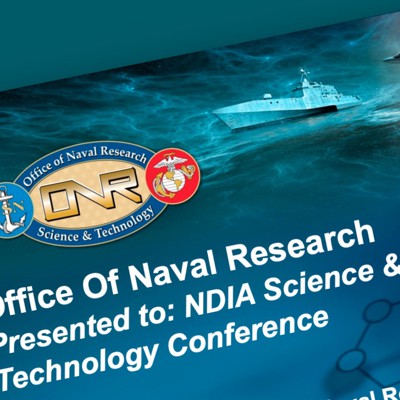Rachel Riley, the new head of the Office of Naval Research, is more than just an alum of the controversial Department of Government Efficiency, according to current and former military and defense officials. Indeed, they said, the 33-year-old Rhodes Scholar and former McKinsey consultant may have what it takes to bring urgent reform to the Navy’s top R&D office.
Riley was appointed acting chief of naval research sometime in October after nine months at Health and Human Services. Like DOGE employees across the federal government, she was assigned to HHS with a White House mandate to reduce staff; Politico described her as a “driving force” behind a failed effort to cut 8,000 people. One official told the news site that “No one wanted to work with her anymore,” but another said had helped “reorganize the department in a short period of time” and brought “strong analysis to the problems.”
And despite DOGE’s record of disruptive change, hasty cuts, fecklessness, and conflicts of interest elsewhere, one former and one current defense official said its members at the Pentagon had a different relationship to their agency. At DOD, the DOGE office is led by Owen West, a former Marine and longtime defense policy expert, not a 19-year-old nicknamed “Big Balls.”
Riley earned an MSc in contemporary Chinese studies and a Ph.D in social policy at Oxford, then worked her way up to partner during eight years at McKinsey.
She had never worked for the government before January, according to her LinkedIn profile. But Riley has completed significant academic work related to China, which sources we spoke to highlighted as relevant. (She is also a military spouse.) At McKinsey, much of her work focused on helping the government address the challenge of too much bureaucracy, too low a risk tolerance, devotion to committee meetings, and other rigid structures that inhibit timely deployment of technology.
Three current senior defense officials on background told Defense One in a note that they had full confidence in Riley and particularly the skills she had honed at McKinsey. They pointed out what numerous government reports have also highlighted, that persistent inefficiencies and layers of bureaucracy in Defense Department-led tech research, including time delays, sometimes caused more than a decade to field new capabilities. The Navy’s canceled $500 million electromagnetic railgun program is one example.
The former defense official said that much of DOD’s work in fields like autonomy and artificial intelligence is simply a slower, more expensive version of what private tech firms already do, often better.
“There are entire enterprises within ONR that have never produced anything,” the official said. “They continue to be justified as part of the research enterprise, the kind of thing Anduril would love to stand up a division to deliver on tomorrow, and Silicon Valley would respond to by founding a whole new company.”
A former military official who worked in drone research noted that billions of dollars going to research projects produces a fielded capability a fraction of the time. “That’s not a great model for the DoD.”
They said some traditional defense contractors have built side businesses around research contracts that lack any requirement to deliver deployable systems quickly.
Meanwhile, private capital is rapidly moving in. Venture-backed defense tech is already producing systems faster and cheaper, largely because much of the research is dual-use. In autonomy, for example, private-sector R&D is driving advances that have direct commercial applications, such as self-piloting cargo vessels.
Venture capitalist Paul Madera made a similar point in December, writing, “Venture capitalists seem to be shifting their investment strategies toward so-called hard tech and deep tech opportunities: hardware products with high technical risk, versus software products with high market risk.”
The former defense official said ONR devotes too little attention to development timelines, and to asking, “What’s commercially available?” New guidance from the defense secretary’s office echoes that point.
Given those trends, the former official said, Riley’s experience is highly relevant.
“The only way to prevent waste is strong leadership willing to say ‘no’ to projects and slaughter sacred cows,” the former defense official said. “And the Navy, with its federated holdover system, is really uncomfortable with that.”
But Riley, and the new research and engineering leaders at the Pentagon, will also need to recognize that ONR funds research in areas that are crucial to national security yet unlikely to attract commercial R&D: high-level encryption, ocean climate science, marine geosciences, physical oceanography, marine biology, and more. As Congress cuts support to institutions like the National Science Foundation, the Defense Department has become a last refuge for high-risk, high-reward, strategically vital research.
These are research areas that China prizes highly. But their future in the U.S. remains uncertain.
Defense One was unable to reach Riley for comment.
Read the full article here








Leave a Reply